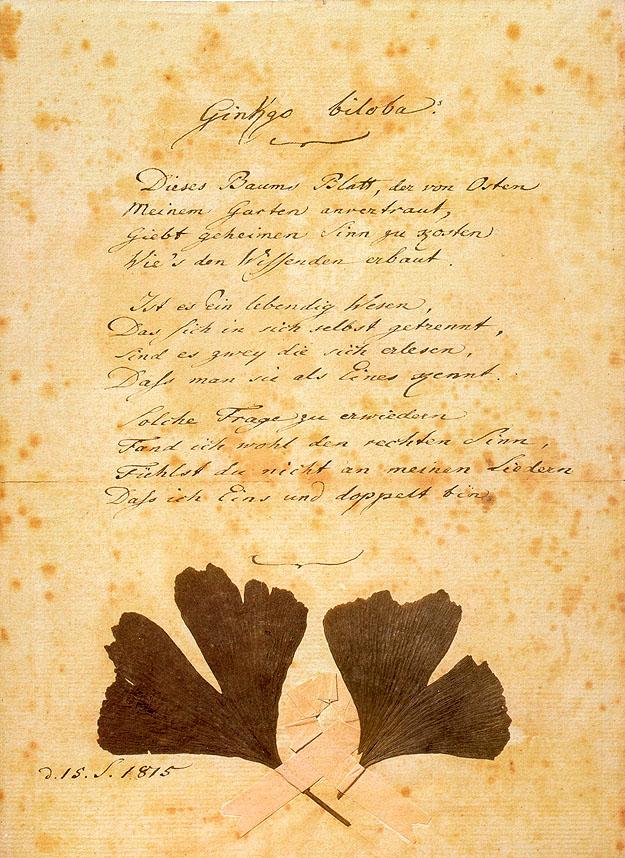王夫之《薑齋絕句》中找不到"目力既有窮,生平不久稽。茍守規中見,安能無笑啼。"
2013年5月12日下午6:03 · 還沒讀過他的著作. 何妨引用過去的一轉引:
王船山說: 「自非聖崛起﹐以至仁大義立千年之人極﹐何足以制其狂流哉?」
1980年代起,全世界在品質、科技、社會等領域上的革新,盛況類似「拔地雷聲驚筍夢,彌天雨色養花神。」---[4] 王船山,轉引自熊十力《新唯識論,卷中,第6章》,台北:廣文出版社,頁75。
目力既有窮,生平不久稽。茍守規中見,安能無笑啼。
.....王夫之《薑齋絕句》
然而知道維基文庫有此書:維基文庫,自由的圖書館
| 薑齋詩話 作者:王夫之 清 |
卷上[編輯]
王仲淹氏之續經,見廢於先儒,舊矣。繼而僭者,《七制》之詔策也。仲淹不任刪 ;《七制》之主臣,尤不足述也。《春秋》者,衰世之事,聖人之刑書也。平、桓 之天子,齊、晉之諸侯,荊、吳、徐、越之僭偽,其視六代、十六國相去無幾;事 不必廢也,而詩亦如之。衛宣、陳靈下逮乎溱洧之士女,葛屨之公子,亦奚必賢於 曹、劉、沈、謝乎?仲淹之刪,非聖人之刪也,而何損於采風之旨邪?故漢、魏以 還之比興,可上通於《風》、《雅》;檜、曹而上之條理,可近譯以三唐。元韻之 機,兆在人心,流連泆宕,一出一入,均此情之哀樂,必永於言者也。故藝苑之士 ,不原本於《三百篇》之律度,則為刻木之桃李;釋經之儒,不證合於漢、魏、唐 、宋之正變,抑為株守之兔罝。陶冶性情,別有風旨。
不可以典冊、簡牘、訓詁之學與焉也。隋舉兩端,可通三隅。
〔詩可以興,可以觀,可以群,可以怨。〕盡矣。辨漢、魏、唐、宋之雅俗得失以 此,讀《三百篇》者必此也。〔可以〕雲者,隋所以而皆可也。於所興而可觀,其 興也深;於所觀而可興,其觀也審。以其群者而怨,怨愈不忘;以其怨者而群,群 乃益摯。出於四情之外,以生起四情;遊於四情之中,情無所窒。作者用一致之思 ,讀者各以其情而自得。故《關雎》,興也;康王晏朝。
而即為冰鑒。〔訏謨定命,遠猷辰告。〕觀也;謝安欣賞,而增其遐心。人情之遊 也無涯,而各以其情遇,斯所貴於有詩。是幫延年不如康樂,而宋、唐之所繇升降 也。謝疊山、虞道園之說詩,並畫而根掘之,惡足知此?
〔采采芣苡〕,意在言先,亦在言後,從容涵泳,自然生其氣象。即五言中,《十 九首》猶有得此意者。陶令差能彷彿,下此絕矣。〔採菊東籬下,悠然見南山〕, 〔眾鳥欣有託,吾亦愛吾廬〕,非韋應物〔兵衛森畫戟,燕寢凝清香〕所得而問津 也。
〔昔我往矣,楊柳依依;今我來思,雨雪霏霏。〕以樂景寫哀,以哀景寫樂,一倍 增其哀樂。知此,則〔影靜千官裡,心蘇七校前〕,與〔唯有終南山色在,晴明依 舊滿長安〕,情之深淺宏隘見矣。況孟郊之乍笑而心迷,香啼而魂喪者乎?
唐人《少年行》云:〔白馬金鞍從武皇,旌旗十萬獵長楊。樓頭少婦鳴箏坐,遙見 飛塵入建章。〕想知少婦遙望之情,以自矜得意,此善於取影者也。〔春日遲遲, 卉木萋萋;倉庚喈喈,採蘩祁祁。執訊獲丑,薄言還歸;赫赫南仲,獫狁於夷。〕 其妙正在此。訓詁家不能領悟,謂婦方採蘩而見歸師,旨趣索然矣。建旌旗,舉矛 戟,車馬喧闐,凱樂競奏之下,倉庚何能不驚飛,而尚聞其喈喈?六師在道,雖曰 勿擾,採蘩之婦,亦何事暴面於三軍之側耶?征人歸矣,度其婦方採蘩,而聞歸師 之凱旋。故遲遲之日,萋萋之草,鳥鳴之和,皆為助喜。而南仲之功,震於閨閣, 家室之欣幸,遙想其然,而征人之意得可知矣。乃以此而稱南仲,又影中取影,曲 盡人情之極至也。
始而欲得其歡,已而稱頌之,終乃有所求焉,細人必出於此。《鹿鳴》之一章曰: 〔示我周行。〕二章曰:〔示民不佻,君子是則是效。〕三章曰:〔以燕樂嘉賓之 心。〕異於彼矣。此之謂大音希聲。希聲,不如其始之勤勤也。杜子美之於韋左丞 ,亦嘗知此乎!
〔庭燎有輝〕,鄉晨之景,莫妙於此。晨色漸明,赤光雜煙而靉靆,但以〔有輝〕 二字寫之。唐人《除夕》詩〔殿庭銀燭上熏天〕之句,寫除夕之景,與此彷彿,而 簡至不逮遠矣。〔花迎劍佩〕四字,差為曉色朦朧傳神;而又雲〔星初落〕,則痕 跡露盡。益歎《三百篇》之不可及也!
蘇子瞻謂〔桑之未落,其葉沃若〕,體物之工,非〔沃若〕不足以言桑,非桑不足 以當〔沃若〕,固也。然得物態,未得物理。〔桃之夭夭,其葉蓁蓁〕,〔灼灼其 華〕,〔有蕡其實〕,乃窮物理。夭夭者,桃之稚者也。桃至拱把以上,則液流稚 結,花不榮,葉不盛,實不蕃。小樹弱枝,婀娜妍茂為有加耳。
〔子之不淑,雲如之何〕,〔胡然我念之,亦可懷也〕,皆意藏篇中。杜子美〔故 國平居有所思〕,上下七首,於此維繫,其源出此。俗筆必於篇終結鎖,不然則迎 頭便喝。
句絕而語不絕,韻變而意不變,此詩家必不容昧之幾。〔天命玄鳥,降而生商。〕 降者,玄鳥降也,句可絕而語未終也。〔薄污我私,薄浣我衣。害浣害否?歸寧父 母。〕意相承而韻移也。盡古今作者,未有不率繇乎此。不然,氣絕神散,如斷蛇 剖瓜矣。近有吳中顧夢麟者,以帖括塾師之識說詩,遇轉則割裂,別立一意。不以 詩解詩,而以學究之陋解詩,令古人雅度微言,不相比附。陋子學詩,其弊必至於 此。
知〔池塘生春草〕、〔蝴蝶飛南園〕之妙,則知〔楊柳依依〕、〔零雨其濛〕之聖 於詩;司空表聖所謂〔規以象外,得之園中〕者也。
〔賜名大國虢與秦〕,與〔美孟姜矣〕、〔美孟弋矣〕、〔美孟庸矣〕一轍,古有 不諱之言也,乃《國風》之怨而誹,直而絞者也。夫子存而弗刪,以見衛之政散民 離,人誣其上;而子美以得〔詩史〕之譽。夫詩之不可以史為,若口與目之不相為 代也,久矣。《魯頌》,魯風也;《商頌》,宋風也:以其用天子之禮樂,故仍其 名曰〔頌〕。其郊禘之升歌也,乃文之無慚,侈心形焉。〔鼓咽咽,醉言歸,於胥 樂兮。〕與《鐃吹》、《白紵》同其管急弦繁之度,雜霸之風也。鮑昭、李白、曹 鄴以之。
〔女也不爽,士貳其行;士也罔極,二三其德。〕語似排偶,而下三語與上一語相 匹。李白〔劍閣重開蜀北門,上皇車馬若雲屯。少帝長安開紫極,雙懸日月照乾坤 。〕竊取此法而逆用之。蓋從無截然四方八段之風雅也。
謝靈運一意迴旋往復,以盡思理,吟之使人卞躁之意消。《小宛》抑不僅此,情相 若,理尤居勝也。王敬美謂:〔詩有妙悟,非關理也。〕非理抑將何悟?
用復字者,亦形容之意,〔河水洋洋〕一章是也。〔青青河畔草,鬱鬱園中柳〕, 顧用之以駘宕。善學詩者,何必有所規畫以取材?
興在有意無意之間,比亦不容雕刻;關情者景,自與情相為珀芥也。情景雖有在心 在物之分,而景生情,情生景,哀樂之觸,榮悴之迎,互藏其宅。天情物理,可哀 而可樂,用之無窮,流而不滯,窮且滯者不知爾。〔吳楚東南坼,乾坤日夜浮。〕 乍讀之若雄豪,然而適與〔親朋無一字,老病有孤舟〕相為融浹。當知〔倬彼雲漢 〕,頌作人者增其輝光,憂旱甚者益其炎赫,無適而無不適也。唐末人不能及此, 為〔玉合底蓋〕之說,孟郊、溫庭筠分為二壘。天與物其能為爾鬮分乎?
卷下[編輯]
興、觀、群、怨,詩盡於是矣。經生家析《鹿鳴》、《嘉魚》為群,《柏舟》、《 小弁》為怨,小人一往之喜怒耳,何足以言詩?〔可以〕雲者,隨所以而皆可也。 《詩三百篇》而下,唯《十九首》能然。李杜亦彷彿遇之,然其能俾人隨觸而皆可 ,亦不數數也。又下或一可焉,或無一可者。故許渾允為惡詩,王僧孺、庾肩吾及 宋人皆爾。
無論詩歌與長行文字,俱以意為主。意猶帥也。無帥之兵,謂之烏合。李、杜所以 稱大家者,無意之詩,十不得一二也。煙雲泉石,花鳥苔林,金鋪錦帳,寓意則靈 。若齊、梁綺語,宋人摶合成句之出處,役心向彼掇索,而不恤己情之所處發,此 之謂小家數,總在圈繢中求活計也。
把定一題、一人、一事、一物,於其上求形模,求比似,求詞采,求故實;如鈍斧 子劈櫟柞,皮屑紛霏,何嘗動得一絲紋理?以意為主,勢次之。勢者,意中之神理 也。唯謝康樂為能取勢,宛轉屈伸,以求盡其意,意已盡則止,殆無剩語;夭矯連 蜷,煙雲繚繞,乃真龍,非畫龍也。
〔池塘生春草〕、〔蝴蝶飛南園〕、〔明月照積雪〕皆心中目中與相融浹,一出語 時,即得珠圓玉潤;要亦各視其所懷來,則與景相迎者也。〔日暮天無雲,春風散 微和〕,想見陶令當時胸次,豈來雜鉛汞人能作此語?程子謂見濂溪一月,坐春風 中。非程子不能知濂溪如此,非陶令不能自知如此也。
〔僧敲月下門〕只是妄想揣摩,如說他人夢,縱令形容酷似,何嘗毫髮關心?知然 者,以其沉吟〔推敲〕二字,就他作想也。若即景會心,則或〔推〕或〔敲〕,必 居其一,因景因情,自然靈妙,何勞擬議哉?〔長河落日圓〕,初無定景;〔隔水 問樵夫〕,初非想得。則禪家所謂〔現量〕也。
詩文俱有主賓。無主之賓,謂之烏合。俗論以此為賓,以賦為主,皆塾師賺童子死 法耳。立一主以待賓,賓非無主之賓者,乃俱有情而相浹洽。若夫〔秋風吹渭水, 落葉滿長安〕,於賈島何與?〔湘潭雲盡暮煙出,巴蜀雪消春水來〕,於許渾奚涉 ?皆烏合也。〔影靜千官裡,心蘇七校前〕,得主矣,尚有痕跡。〔花迎劍佩星初 落〕,則賓主歷然鎔合一片。
身之所歷,目之所見,是鐵門限。即極寫大景,如:〔陰晴眾壑殊〕、〔乾坤日夜 浮〕,亦必不逾此限。非按輿地圖便可雲〔平野入青徐〕也,抑登樓所得見者耳。 隔垣聽演雜劇,可聞其歌,不見其舞,更遠則但聞鼓聲,而可雲所演何出乎?前有 齊、梁,後有晚唐及宋人,皆欺心以炫巧。
一詩止於一時一事,自《十九首》至陶、謝皆然。〔夔府孤城落日斜〕,繼以〔月 映荻花〕,亦自日斜至月出,詩乃成耳。若杜陵長篇,有曆數月日事者,合為一章 ,《大雅》有此體。後唯《焦仲卿》、《木蘭》二詩為然。要以從旁追敘,非言情 之章也。為歌行則合,五言固不宜爾。
古詩無定體,似可任筆為之,不知自有天然不可越之矩矱。故李於鱗謂:唐無五古 詩,言亦近是;無即不無,但百不得一二而已。所謂矩矱者,意不枝,詞不蕩,曲 折而無痕,戌削而不競之謂。若於鱗所云無古詩,又唯無其形埒字句與其粗豪之氣 耳。不爾,則〔子房未虎嘯〕及《玉華宮》二詩,乃李、杜集中霸氣滅盡,和平溫 厚之意者,何以獨入其選中?
古詩及歌行換韻者,必須韻意不變轉。自《三百篇》以至庾、鮑七言,皆不待鉤鎖 ,自然蟬連不絕。此法可通於時文,使股法相承,股中換氣。近有顧夢鱗者,作《 詩經塾講》,以轉韻立界限,劃斷意旨。劣經生桎梏古人,可惡孰甚焉!晉《清商 》、《三洲》曲及唐人所作,有長篇拆開可作數絕句者,皆●蟲相續成一青蛇之陋 習也。
以神理相取,在遠近之間,才著手便煞,一放手又飄忽去,如〔物在人亡無見期〕 ,捉煞了也。如宋人《詠河魨》云:〔春洲生荻芽,春岸飛楊花。〕饒他有理,終 是於河魨沒交涉。〔青青河畔草〕與〔綿綿思遠道〕,何以相因依,相含吐?神理 湊合時,自然恰得。
太白胸中浩渺之致,漢人皆有之,特以微言點出,包舉自宏。太白樂府歌行,則傾 囊而出耳。如射者引弓極滿,或即發矢,或遲審久之,能忍不能忍,其力之大小可 知已。要至於太白止矣。一失而為白樂天,本無浩渺之才,如決池水,旋踵而涸。 再失而為蘇子瞻,萎花敗葉,隨流而漾,胸次侷促,亂節狂興,所必然也。
〔海暗三山雨〕接〔此鄉多寶玉〕不得。迤邐說到〔花明五嶺春〕,然後彼句可來 ,又豈嘗無法哉?非皎然、高柄之法耳。若果足為法,烏容破之?非法之法,則破 之不盡,終不得法。詩之有皎然、虞伯生,經義之有茅鹿門、湯賓尹、袁了凡,皆 畫地成牢以陷人者,有死法也。死法之立,總緣識量狹小。如演雜劇,在方丈台上 ,故有花樣步位,稍移一步則錯亂。若馳騁康莊,取塗千里,而用此步法,雖至愚 者不為也。
情、景名為二,而實不可離。神於詩者,妙合無垠。巧者則有情中景,景中情。景 中情者,如〔長安一片月〕,自然是孤棲憶遠之情;〔影靜千官裡〕,自然是喜達 行在之情。情中景尤難曲寫,如〔詩成珠玉在揮毫〕,寫出才人翰墨淋漓、自心欣 賞之景。凡此類,知者遇之;非然,亦鶻突看過,作等閒語耳。
〔更喜年芳入睿才〕與〔詩成珠玉在揮毫〕,可稱雙絕。不知者以〔入〕字〔在〕 字為用字之七,不知渠自順手湊著。
〔欲投人處宿,隔水問樵夫。〕則山之遼廓荒遠可知,與上六句初無異致,且得賓 主分明,非獨頭意識懸相描摹也。〔親朋無一字,老病有孤舟。〕自然是登岳陽樓 詩。嘗試設身作杜陵,憑軒遠望觀,則心目中二語居然出現,此亦情中景也。孟浩 然以〔舟楫〕、〔垂釣〕鉤鎖合題,卻自全無干涉。
近體中二聯,一情一景,一法也。〔雲霞出海曙,梅柳渡江春。淑氣催黃鳥,晴光 轉綠蘋。〕〔雲飛北闕輕陰散,雨歇南山積翠來。御柳已爭梅信發,林花不待曉風 開。〕皆景也,何者為情?若四句俱情而無景語者,尤不可勝數,其得謂之非法乎 ?夫景以情合,情以景生,初不相離,唯意所適。截分兩橛,則情不足與,而景非 其景。且如〔九月寒砧催木葉〕,二句之中,情景作對;〔片石孤雲窺色相〕四句 ,情景雙收:更從何處分析?陋人標陋格,乃謂〔吳楚東南坼〕四句,上景下情, 為律詩憲典,不顧杜陵九原大笑。愚不可瘳,亦孰與療之?
起承轉收,一法也。試取初盛唐律驗之,誰必株守此法者?法莫要於成章;立此四 法,則不成章矣。且道〔盧家少婦〕一詩作何解?是何章法?又如〔火樹銀花合〕 ,渾然一氣;〔亦知戍不返〕,曲折無端。其他或平鋪六句,以二語括之;或六七 句意已無餘,末句用飛白法颺開,義趣超遠:起不必起,收不必收,乃使生氣靈通 ,成章而達。至若〔故國平居有所思〕,〔有所〕二字,虛籠喝起,以下曲江蓬萊 、昆明、紫閣,皆所思者,此自《大雅》來;謝客五言長篇用為章法;杜更藏鋒不 露,摶合無垠:何起何收,何承何轉?陋人之法,烏足展騏驥之足哉?近世唯楊用 修辨之甚悉。用修工於用法,唯其能破陋人之法也。
起承轉收以論詩,用教幕客作應酬或可;其或可者,八句自為一首尾也。塾師乃以 此作經義法,一篇之中,四起四收,非●蟲相銜成青竹蛇而何?兩間萬物之生,無 有尻下出頭,枝末生根之理。不謂之不通,其可得乎?
《樂記》云:〔凡音之起,從人心生也。〕固當以穆耳協心為音律之準。〔一三五 不論,二四六分明〕之說,不可恃為典要。〔昔聞洞庭水〕,〔聞〕、〔庭〕二字 俱平,正爾振起。若〔今上岳陽樓〕易第三字為平聲,雲〔今上巴陵樓〕,則語蹇 而戾於聽矣。〔八月湖水平〕,〔月〕、〔水〕二字皆仄,自可;若〔涵虛混太清 〕易作〔混虛涵太清〕,為泥聲土鼓而已。又如〔太清上初日〕,音律自可;若雲 〔太清初上日〕,以求合於粘,則情文索然,不復能成佳句。又如楊用修警句云: 〔誰起東山謝安石,為君談笑淨烽煙?〕若謂〔安〕字失粘,更雲〔誰起東山謝太 傳〕,拖沓便不成響。足見凡言法者,皆非法也。釋氏有言:〔法尚應捨,何況非 法?〕藝文家知此,思過半矣。
作詩亦須識字。如思、應、教、令、吹、燒之類,有平仄二聲,音別則義亦異。若 粘與押韻,於此鶻突,則荒謬止堪嗤笑。唐人不尋出處,不誇字學,而犯此者百無 一二。宋人以博核見長,偏於此多誤。杜陵以酇侯〔酇〕字作〔才何切〕,平聲粘 ,緣《史》、《漢》注自有兩說,非不識字也。至廉頗音〔婆〕,相如音〔湘〕, 則考據精切矣。蘇子瞻不知《軒轅彌明詩序》〔長頭高結〕,〔結〕字作〔潔〕音 ,稚子之所恥為,而孟浪若此!近見有和人韻者,以〔葑菲〕字音押,雖不足道, 亦可為不學人永鑒。
唯孟浩然〔氣蒸雲夢澤〕,不知〔雲土夢作乂〕,〔夢〕本音蒙。〔青陽逼歲除〕 不知〔日月其除〕,〔除〕本音住。浩然山人之雄長,時有秀句;而輕飄短味,不 得與高、岑、王、儲齒。近世文征仲輕秀與相頡頏,而思緻密贍,駸駸欲度其前。
王子敬作一筆草書,遂欲跨右軍而上。字各有形埒,不相因仍,尚以一筆為妙境, 何況詩文本相承遞耶?一時、一事、一意,約之止一兩句;長言永歎,以寫纏綿悱 惻之情,詩本教也。《十九首》及〔上山採蘼蕪〕等篇,止以一筆入聖證。自潘岳 以凌雜之心,作蕪亂之調,而後元聲幾熄。唐以後間有能此者,多得之絕句耳。一 意中但取一句,〔松下問童子〕是已。如〔怪來妝閣閉〕,又止半句,愈入化境。 近世郭奎〔多病文園渴未消〕一絕,彷彿得之。劉伯溫、楊用修、湯易仍、徐文長 有純淨者,亦無歇筆。至若晚唐餖湊,宋人支離,俱令生氣頓絕。〔承恩不在貌, 教妾若為容。風暖鳥聲碎,日高花影重。〕醫家名為關格,死不治。
不能作景語,又何能作情語耶?古人絕唱句多景語,如〔高台多悲風〕、〔蝴蝶飛 南園〕、〔池塘生春草〕、〔亭皋木葉下〕、〔芙蓉露下落〕,皆是也,而情寓其 中矣。以寫景之心理言情,則身心中獨喻之微,輕安拈出。謝太傳於《毛詩》取〔 訏謨定命,遠猷辰告〕,以此八句如一串珠,將大臣經營國事之心曲,寫出次第, 故與〔昔我往矣,楊柳依依;今我來思,雨雪霏霏〕同一達情之妙。
有大景,有小景,有大景中小景。〔柳葉開時任好風〕、〔花覆千官淑景移〕及〔 風正一帆懸〕、〔青靄入看無〕,皆以小景傳大景之神。若〔江流天地外,山色有 無中〕、〔江山如有待,花柳更無私〕,張皇使大,反令落拓不親。宋人所喜,偏 在此而不在彼。近唯文征仲《齋宿》等詩,能解此妙。
情語能以轉折為含蓄者,唯杜陵居勝,〔清渭無情極,愁時獨向東〕、〔柔櫓輕鷗 外,含淒覺汝賢〕之類是也。此又與〔忽聞歌古調,歸思欲沾巾〕更進一格,益使 風力遒上。
含情而能達,會景而生心,體物而得神,則自有靈通之句,參化工之妙。若但於句 求巧,則性情先為外蕩,生意索然矣。〔松陵體〕永墮小乘者,以無句不巧也。然 皮、陸二子,差有興會,猶堪諷詠。若韓退之以險韻、奇字、古句、方言矜其餖輳 之巧,巧誠巧矣,而於心情興會,一無所涉,適可為酒令而已。黃魯直、米元章益 墮此障中。近則王謔庵承其下游,不恤才情,別尋蹊徑,良可惜也。
對偶有極巧者,亦是偶然湊手,如〔金吾〕、〔玉漏〕、〔尋常〕、〔七十〕之類 ,初不以此礙於理趣,求巧則適足取笑而已。賈島詩:〔高人燒藥罷,下馬此林間 。〕以〔下馬〕對〔高人〕,噫!是何言與!
一解弈者,以誨人弈為遊資。後遇一高手,與對弈,至十數子,輒揶揄之曰:〔此 教師棋耳!〕詩文立門庭,使人學己,人一學即似者,自詡為〔大家〕,為〔才子 〕,亦藝苑教師而已。高廷禮、李獻吉、何大復、李於鱗、王元美、鍾伯敬、譚友 夏,所尚異科,其歸一也。才立一門庭,則但有其局格,更無性情,更無興會,更 無思致;自縛縛人,誰為之解者?昭代風雅,自不屬此數公。若劉伯溫之思理,高 季迪之韻度,劉彥昺之高華,貝廷琚之俊逸,湯義仍之靈警,絕壁孤騫,無可攀躡 ,人固望洋而返;而後以其亭亭嶽嶽之風神,與古人相輝映。次則孫仲衍之暢適, 周履道之蕭清,徐昌穀之密贍,高子業之戌削,李賓之之流麗,徐文長之豪邁,各 擅勝場,沉酣自得;正以不懸牌開肆,充風雅牙行,要使光焰熊熊,莫能掩抑,豈 與碌碌餘子爭市易之場哉?李文饒有云:〔好驢馬不逐隊行。〕立門庭與依傍門庭 者,皆逐隊者也。
建立門庭,自建安始。曹子建鋪排整飾,立階級以賺人升堂,用此致諸趨赴之客, 容易成名,伸紙揮毫,雷同一律。子桓精思逸韻,以絕人攀躋,故人不樂從,反為 所掩。子建以是壓倒阿兄,奪其名譽。實則子桓天才駿發,豈子建所能壓倒耶?故 嗣是而興者,如郭景純、阮嗣宗、謝客、陶公,乃至左太沖、張景陽,皆不屑染指 建安之羹鼎,視子建蔑如矣。降而蕭梁宮體,降而王、楊、盧、駱,降而大曆十才 子,降而溫、李、楊、劉,降而〔江西宗派〕,降而北地、信陽、琅邪、歷下,降 而竟陵,所翕然從之者,皆一時和哄漢耳。宮體盛時,即有庾子山之歌行,健筆縱 橫,不屑煙花簇湊。唐初比偶,即有陳子昂、張子壽扢揚大雅。繼以李、杜代興, 杯酒論文,雅稱同調;而李不襲杜,杜不謀李,未嘗黨同伐異,畫疆默守。沿及宋 人,始爭疆壘。歐陽永叔亟反楊億、劉筠之靡麗,而矯枉已迫,還入於枉,遂使一 代無詩,掇拾誇新,殆同觴令。胡元浮艷,又以矯宋為工。蠻觸之爭,要於興、觀 、群、怨,絲毫未有當也。伯溫、季迪以和緩受之,不與元人競勝,而自問風雅之 津。故洪武間詩教中興,洗四百年三變之陋。是知立〔才子〕之目,標一成之法, 扇動庸才,旦仿而夕肖者,原不足以羈絡騏驥;唯世無伯樂,則駕鹽車上太行者, 自鳴駿足耳。
所以門庭一立,舉世稱為〔才子〕、為〔名家〕者有故。如欲作李、何、王、李門 下廝養,但買得《韻府群玉》、《詩學大成》、《萬姓統宗》、《廣輿記》四書置 案頭,遇題查湊,即無不足。若欲吮竟陵之唾液,則更不須爾,但就措大家所誦時 文〔之〕、〔於〕、〔其〕、〔以〕、〔靜〕、〔澹〕、〔歸〕、〔懷〕熟活字句 湊泊將去,即已居然詞客。如源休一收圖籍,即自謂酇侯,何得不向白華殿擁戴硃 泚耶?為硃泚者,遂褎然自以為天子矣。舉世悠悠,才不敏,學不充,思不精,情 不屬者,十姓百家而皆是。有此開方便門大功德主,誰能捨之而去?又其下更有皎 然《詩式》一派,下游印紙門神待填硃綠者,亦號為詩。《莊子》曰:〔人莫悲於 心死。〕心死矣,何不可圖度予雄耶?
曹子建之於子桓,有仙凡之隔,而人稱子建,不知有子桓,俗論大抵如此。王敬美 風神蘊藉,高出元美上者數等,而俗所歸依,獨在元美。元美如吳夫差倚豪氣以爭 執牛耳,勢之所凌灼,亦且如之何哉?敬美論詩,大有玄微之旨。其雲〔河下傭〕 者,阿兄即是。揮毫落紙,非雲非煙,為五里霧耳。如《送蔡子木詩》:〔一去蔡 邕誰倒屣?可憐王粲獨登樓。〕恰好安排,一呼即集,非〔河下傭〕而何?
元美末年以蘇子瞻自任,時人亦譽為〔長公再來〕。子瞻詩文雖多滅裂,而以元美 擬之,則辱子瞻太甚。子瞻、野狐禪也,元美則吹螺搖鈴,演《梁皇懺》一應付僧 耳。〔為報鄰雞莫驚覺,更容殘夢到江南。〕元美竭盡生平,能作此兩句不?
立門庭者必餖飣,非餖飣不可以立門庭。蓋心靈人所自有而不相貸,無從開方便法 門,任陋人支借也。人譏〔西崑體〕為獺祭魚,蘇子瞻、黃魯直亦獺耳!彼所祭者 ,肥油江豚;此所祭者,吹沙跳浪之鱨鯊也。除卻書本子,則更無詩。如劉彥昺詩 :〔山圍曉氣蟠龍虎,台枕東風憶鳳凰。〕貝廷琚詩:〔我別語兒溪上宅,月當二 十四回新。〕〔如何萬國尚戎馬,只恐四鄰無故人。〕用事不用事,總以曲寫心靈 ,動人興、觀、群、怨,卻使陋人無從支借;唯其不可支借,故無有推建門庭者, 而獨起四百年之衰。
〔落日照大旗,馬鳴風蕭蕭〕,豈以〔蕭蕭馬鳴,悠悠旆旌〕為出處耶?用意別, 則悲愉之景原不相貸,出語時偶然湊合耳。必求出處,宋人之陋也。其尤酸迂不通 者,既於詩求出處,抑以詩為出處,考證事理。杜詩:〔我欲相就沽斗酒,恰有三 百青銅錢。〕遂據以為唐時酒價。崔國輔詩:〔與沽一斗酒,恰用十千錢。〕就杜 陵沽處販酒向崔國輔賣,豈不三十倍獲息錢耶?求出處者,其可笑類如此。
一部杜詩,為劉會孟堙塞者十之五,為《千家注》沉埋者十之七,為謝疊山、虞伯 生汙蔑更無一字矣。開卷《龍門奉先寺詩》:〔天闕象緯逼,雲臥衣裳冷。〕盡人 解一〔臥〕字不得,只作人臥雲中,故於〔闕〕字生許多胡猜亂度。此等下字法, 乃子美早年未醇處,從陰鑒、何遜來,向後脫卸乃盡,豈黃魯直所知耶?至〔沙上 鳧雛傍母眠〕,誣為嘲誚楊貴妃、安祿山,則市井惡少造謠歌,誚鄰人閨閫惡習, 施之君父,罪不容於死矣。
《小雅鶴鳴》之詩,全用比體,不道破一句,《三百篇》中創調也。要以俯仰物理 而詠歎之,用見理隨物顯,唯人所感,皆可類通;初非有所指斥,一人一事,不敢 明言,而姑為隱語也。若他詩有所指斥,則皇父、尹氏、暴公,不憚直斥其名,歷 數其慝;而且自顯其為家父,為寺人孟子,無所規避。詩教雖雲溫厚,然光昭之志 ,無畏於天,無恤於人,揭日月而行,豈女子小人半含不吐之態乎?《離騷》雖多 引喻,而直言處亦無所諱。宋人騎兩頭馬,欲博忠直之名,又畏禍及,多作影子語 巧相彈射,然以此受禍者不少,既示人以可疑之端,則雖無所誹誚,亦可加以羅織 。觀蘇子瞻烏台詩案,其遠謫窮荒,誠自取之矣;而抑不能昂首舒吭以一鳴,三木 加身,則曰〔聖主如天萬物春〕,可恥孰甚焉!近人多效此者,不知輕薄圓頭惡習 ,君子所不屑久矣。
近體,梁、陳已有,至杜審言而始葉於度。歌行,鮑、庾初制,至李太白而後極其 致。蓋創作猶魚之初漾於洲渚,繼起者乃泳游自恣,情舒而鱗鬐始展也。七言絕句 ,初盛唐既饒有之,稍以鄭重,故損其風神。至劉夢得而後宏放出於天然,於以揚 扢性情,馺娑景物,無不宛爾成章,誠小詩之聖證矣。此體一以才情為主。言簡者 最忌侷促,侷促則必有滯累;苟無滯累,又蕭索無餘。非有紅爐點雪之襟宇,則方 欲馳騁,忽爾蹇躓;意在矜莊,只成疲苶。以此求之,知率筆口佔之難,倍於按律 合轍也。夢得而後,唯天分高朗者能步其芳麗塵。白樂天、蘇子瞻皆有合作,近則 湯義仍、徐文長、袁中郎往往能居勝地,無不以夢得為活譜。才與無才,情與無情 ,唯此體可以驗之。不能作五言古詩,不足入風雅之室;不能作七言絕句,直是不 當作詩。區區近體中覓好對語,一四六幕客而已。
七言絕句,唯王江寧能無疵纇;儲光義、崔國輔其次者。至若〔秦時明月漢時關〕 ,句非不鏈,格非不高,但可作律詩起句,施之小詩,未免有頭重之病。若〔水盡 南天不見雲〕、〔永和三日蕩輕舟〕、〔囊無一物獻尊親〕、〔玉帳分弓射虜營〕 ,皆所謂滯累,以有襯字故也。其免於滯累者,如〔只今唯有西江月,曾照吳王宮 裡人〕、〔黃鶴樓中吹玉笛,江城五月落梅花〕、〔此夜曲中聞《折柳》,何人不 起故園情〕,則又疲苶無生氣,似欲匆匆結煞。
作詩但求好句,已落下乘。況絕句只此數語,拆開作一俊語,豈復成詩?〔百戰方 夷項,三章且易秦。功歸蕭相國,氣盡戚夫人。〕恰似一漢高帝謎子,擲開成四片 ,全不相關通。如此作詩,所謂〔佛出世也救不得〕也。
建立門庭,已絕望風雅。然其中有本無才情,以此為安身立命之本者,如高廷禮、 何大復、王元美、鍾伯敬是也。有才情固自足用,而以立門庭故自桎梏者,李獻吉 是也。其次則譚友夏亦有牙後慧,使不與鍾為徒,幾可分文徵仲一席,當於其五七 言絕句驗之。
論畫者曰:〔咫尺有萬里之勢。〕一〔勢〕字宜著眼。若不論勢,則縮萬里於咫尺 ,直是《廣輿記》前一天下圖耳。五言絕句,以此為落想時第一義,唯盛唐人能得 其妙。如〔君家住何處?妾住在橫塘。停船暫借問,或恐是同鄉〕,墨氣所射,四 表無窮,無字處皆其意也。李獻吉詩:〔浩浩長江水,黃州若個邊?岸回山一轉, 船到堞樓前。〕固自不失此風味。
五言絕句自五言古詩來,七言絕句自歌行來,此二體本在律詩之前;律詩從此出, 演令充早日暢耳。有云:絕句者,截取律詩一半,或絕前四句,或絕後四句,或絕 首尾各二句,或絕中兩聯。審爾,斷頭刖足,為刑人而已。不知誰作此說,戕人生 理?自五言古詩來者,就一意中圓淨成章,字外含遠神,以使人思;自歌行來者, 就一氣中駘宕靈通,句中有餘韻,以感人情。脩短雖殊,而不可雜冗滯累則一也。 五言絕句,有平鋪兩聯者,亦陰鑒、何遜古詩之支裔。七言絕句,有對偶如:〔故 鄉今夜思千里,霜鬢明朝又一年〕,亦流動不羈,終不可作〔江間波浪兼天湧,塞 上風雲接地陰〕平實語。足知絕律四句之說,牙行賺客語,皮下有血人不受他和哄 。
《大雅》中理語造極精微,除是周公道得,漢以下無人能嗣其響。陳正字、張曲江 始倡《感遇》之作,雖所詣不深,而本地風光,駘宕人性情,以引名教之樂者,風 雅源流,於斯不昧矣。硃子和陳、張之作,亦曠世而一遇。此後唯陳白沙為能以風 韻寫天真,使讀之者如脫鉤而遊杜蘅之沚。王伯安厲聲吆喝:〔個個人心有仲尼。 〕乃遊食髡徒夜敲木板叫街語,驕橫鹵莽,以鳴其〔蠢動含靈,皆有佛性〕之說, 志荒而氣因之躁,陋矣哉!
門庭之外,更有數種惡詩:有似婦人者,有似衲子者,有似鄉塾師者,有似遊食客 者。婦人、衲子,非無小慧;塾師、遊客,亦侈高談。但其識量不出針線蔬筍,數 米量鹽,抽豐告貸之中;古今上下哀樂,了不相關,即令揣度言之,亦粵人詠雪, 但言白冷而已。然此數者,亦有所自來,以為依據:似婦人者,仿《國風》而失其 不淫之度。晉、宋以後,柔曼移於壯夫;;近則王辰玉、譚友夏中之。似衲子者, 其源自東晉來。鍾嶸謂陶令為隱逸詩人之宗,亦以其量不弘而氣不勝,下此者可知 已。自是而賈島固其本色;陳無己刻意冥搜,止墮虀鹽窠臼;近則鍾伯敬通身陷入 ;陳仲醇縱饒綺語,亦宋初九僧之流亞耳。似塾師、遊客者,《衛風》、《北門》 實為作俑。彼所謂〔政散民流,誣上行私而不可止〕者,夫子錄之,以著衛為狄滅 之因耳。陶公〔饑來驅我去〕,誤墮其中。杜陵不審,鼓其餘波。嗣後啼饑號寒, 望門求索之子,奉為羔雉,至陳昂、宋登春而丑穢極矣。學詩者,一染此數家之習 ,白練受污,終不可復白,尚戒之哉!
艷詩有述歡好者,有述怨情者,《三百篇》亦所不廢;顧皆流覽而達其定情,非沉 迷不反,以身為妖冶之媒也。嗣是作者,如〔荷葉羅裙一色裁〕,〔昨夜風開露井桃〕,皆艷極而有所止。至如太白《烏棲曲》諸篇,則又寓意高遠,尤為雅奏。其述怨情者,在漢人則有〔青青河畔草,鬱鬱園中柳〕,唐人則〔閨中少婦不知愁〕 、〔西宮夜靜百花香〕,婉孌中自矜風軌。迨元、白起,而後將身化作妖冶女子, 備述衾裯中醜態。杜牧之惡其蠱人心,敗風俗,欲施以典刑,非已甚也。近則湯義仍屢為泚筆,而固不失雅步。唯譚友夏渾作青樓淫咬,鬚眉盡喪;潘之恆輩又無論已。《清商曲》起自晉、宋,蓋里巷淫哇,初非文人所作,猶今之《劈破玉》、《 銀紐絲》耳。操觚者即不惜廉隅,亦何至作《懊儂歌》、《子夜》、《讀曲》?





















































 I.M. Pei in 1989 outside the glass pyramid he designed at the Louvre in Paris, one of his most famous commissions. “If there’s one thing I know I didn’t do wrong, it’s the Louvre,” he said.CreditCreditMarc Riboud/Magnum Photos
I.M. Pei in 1989 outside the glass pyramid he designed at the Louvre in Paris, one of his most famous commissions. “If there’s one thing I know I didn’t do wrong, it’s the Louvre,” he said.CreditCreditMarc Riboud/Magnum Photos

